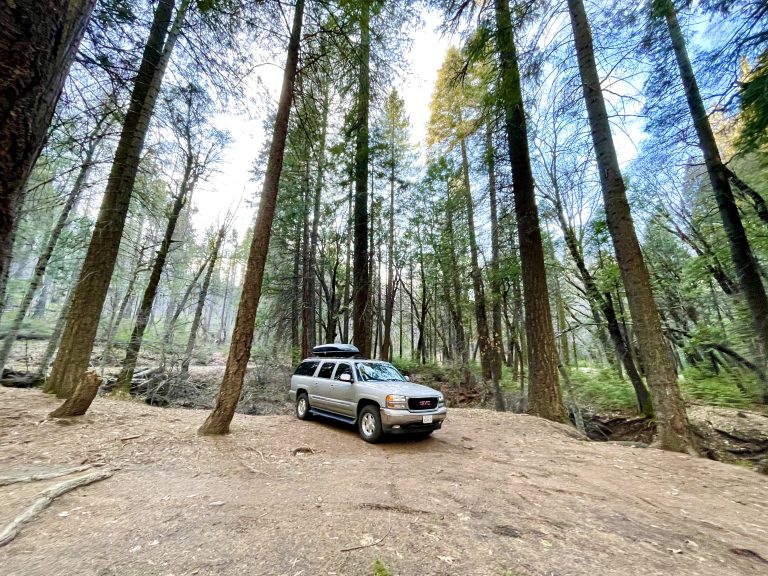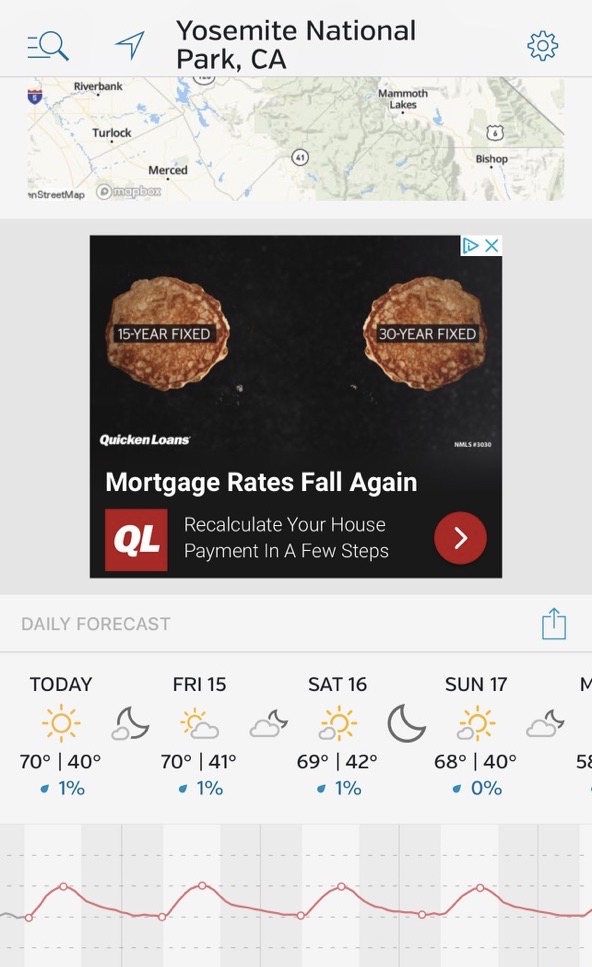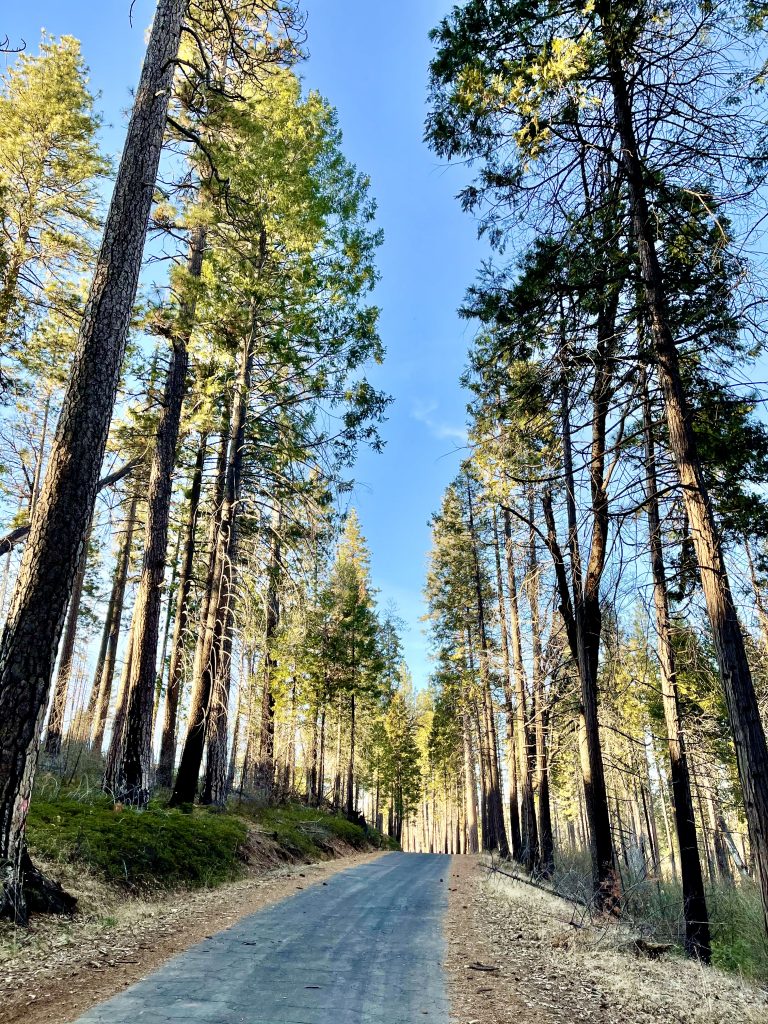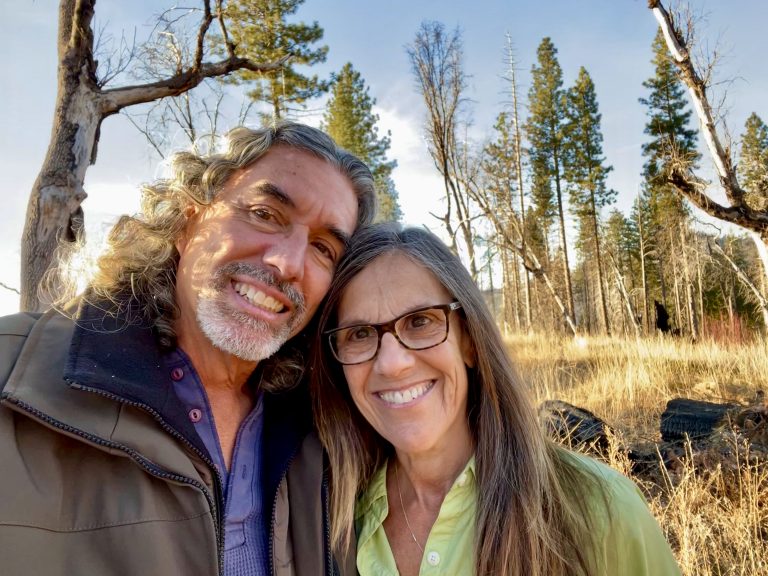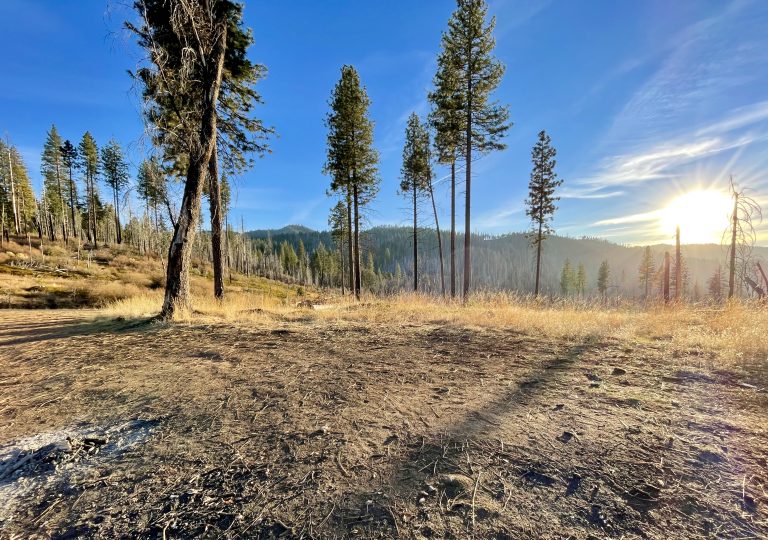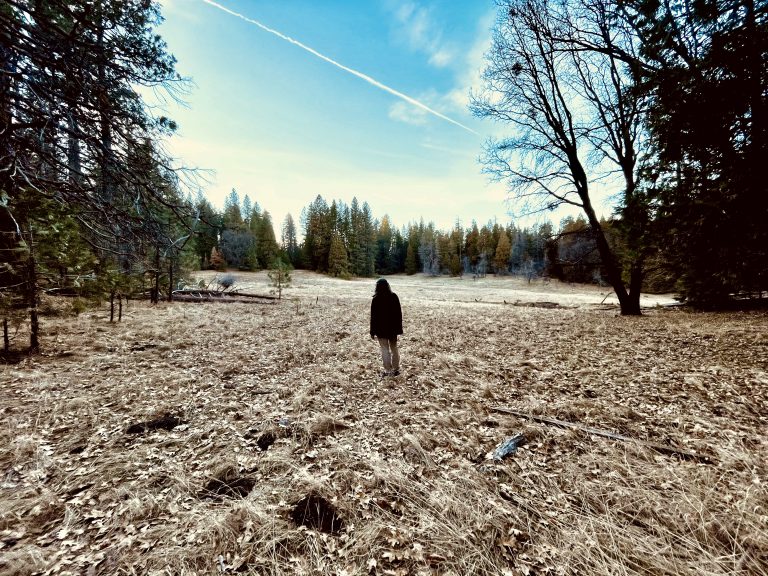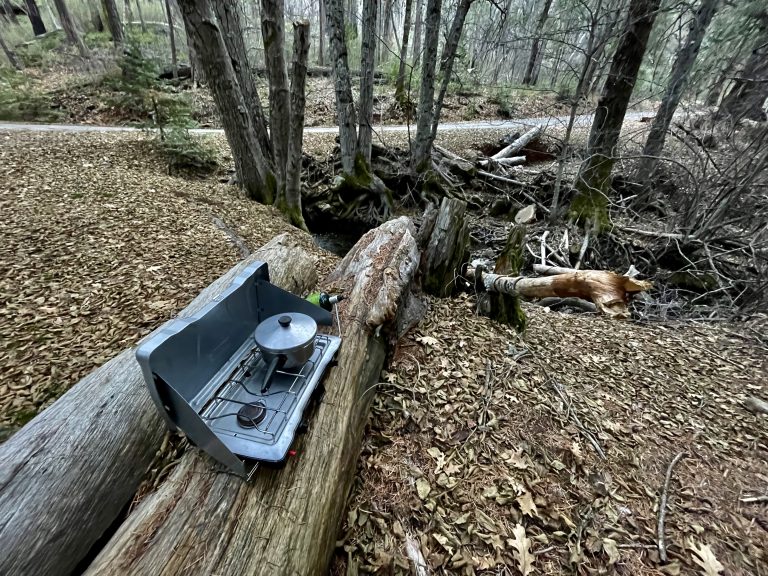January 14, 2021. A few days of rainy and cool weather was starting to make us antsy for a road trip. We found a window of a few surprisingly warm days to get away in mid-January and started exploring options. The coast was clear for once but camping opportunities were limited there due to Covid. Looking at weather forecasts we made a startling discovery. Yosemite National Park was going to have a 3 to 4-day stretch of 70-degree weather. In mid-January! Usually at this time of year many of the roads there are closed and the snow is piling up. We’d been a couple hours south of the park just a few weeks ago at Sequoia National Park and could get only a few miles in before the road was closed due to snow.
Trusting the forecast, we loaded up the truck with enough food and water for about three days and brought our new snowshoes just in case. We each even packed a pair of shorts in case it was really warm.
After we left the house, Rocky’s dreaded service 4wd warning message came on, meaning we had no 4wd or stability control. So far, I’d spent several hours and a couple hundred dollars trying to fix the intermittent problem and now I was really frustrated. Obviously, I still had more work. Fortunately, the light usually went off after the truck sat for a while and I hoped we wouldn’t need to depend on it for this trip.
Four hours later, we turned off the highway to Yosemite onto Hardin Flat Road where we knew there was some dispersed camping in the National Forest just a few minutes outside the entrance to the park. A short mile down the paved one-lane road, we turned off into a pretty little spot under a thick canopy of tall trees, including redwoods and Ponderosa pines—and right next to small but pleasantly noisy Rush Creek. In summer, we imagined that three or four campers would share this spot, but we had it to ourselves. Being near the creek bed and surrounded by trees, I knew it would be colder here tonight, but when we see a chance to camp by a stream, we jump.
Once situated, we took a walk farther up the road under the canopy of tall trees until the view opened up. Within a mile saw at least four or five more campsites, one on a hill warmed by the setting sun. None were occupied. Tomorrow, we thought, maybe camp at one of the sunny spots?
On our way back down the road, we made one last stop at a quiet meadow. Accessing the meadow required climbing over barbed wire at a spot where a tree had fallen and pressed the fence close to the ground. Previous campers had created a trail over the log and into the lovely open space. We wondered why the barbed wire was there—to keep grazing cattle in? To keep explorers like us out? We didn’t see any cattle or, for that matter, any elk as we’d hoped we might (especially since it was dusk).
Afterwards, we zipped up our jackets as we headed down the hill to the creek. Our campsite was at least 10 degrees cooler than those up the road. But we had the creek. By the time we’d returned to our campsite, it was getting dark. It wasn’t worth setting up our chairs and table since it quickly became too chilly to comfortably cook, eat, or even sit outside for long. There was plenty of wood nearby and we considered building a fire—something we rarely can do due to fire restrictions; once the rain and snow come in winter, fire restrictions are lifted in most National Forests in California. But we were tired from the drive and decided we’d just make dinner and then turn in early.
Before we’d left on our walk, I’d placed a container of partially frozen soup we’d made at home in the warm engine compartment to help it thaw. It worked!
We set up the stove on a fallen log at the edge of the creek, finished heating the hearty soup, and enjoyed our dinner sitting on the log as the evening chill descended.
Tomorrow we’d hike at Hetch Hetchy—a section of Yosemite that was at a lower elevation. Afterwards, perhaps we’d go higher and find some snowshoeing opportunities. We knew it would be a chilly night, but the sound of the creek—and nothing else—lulled us to sleep.

